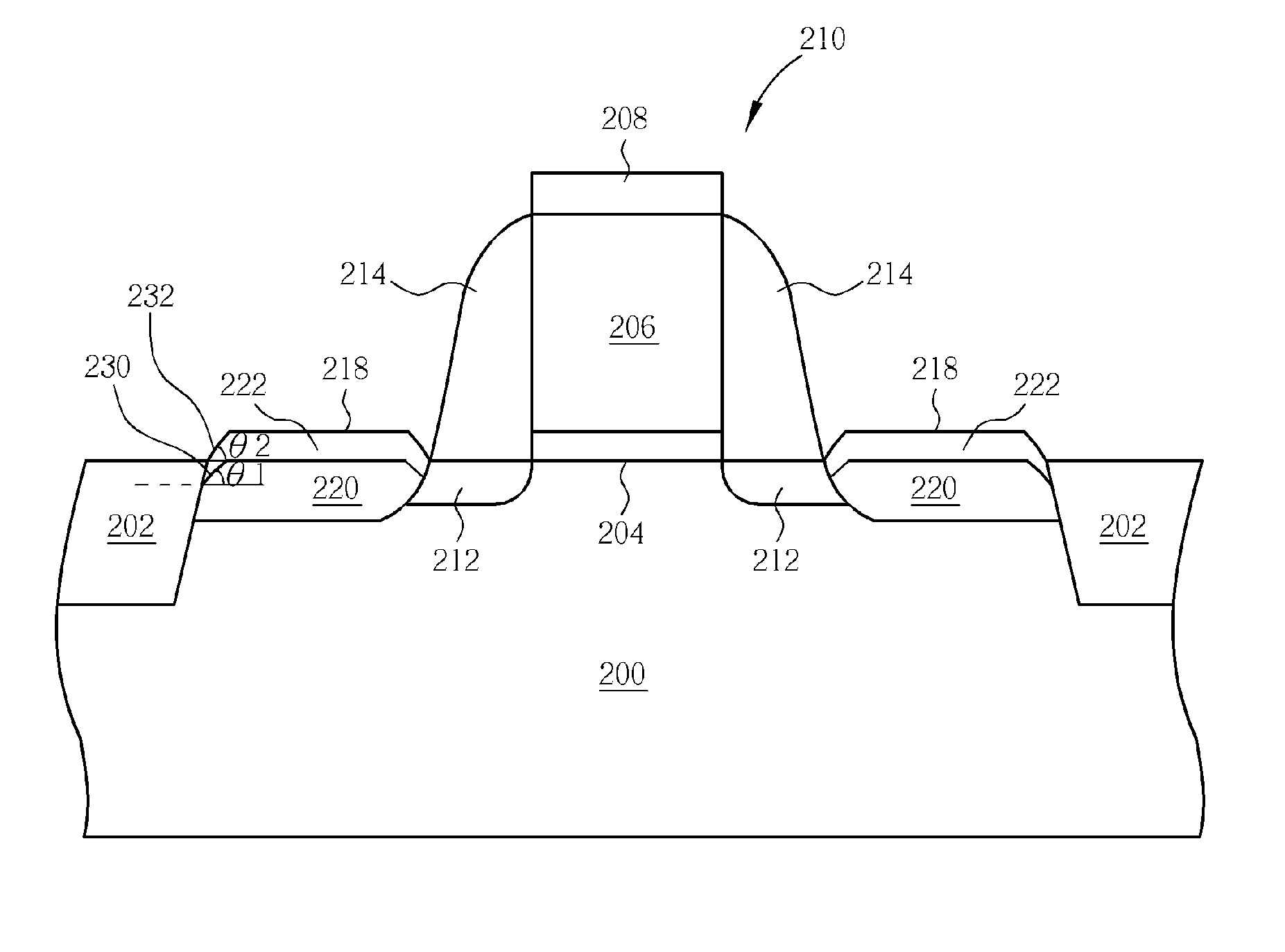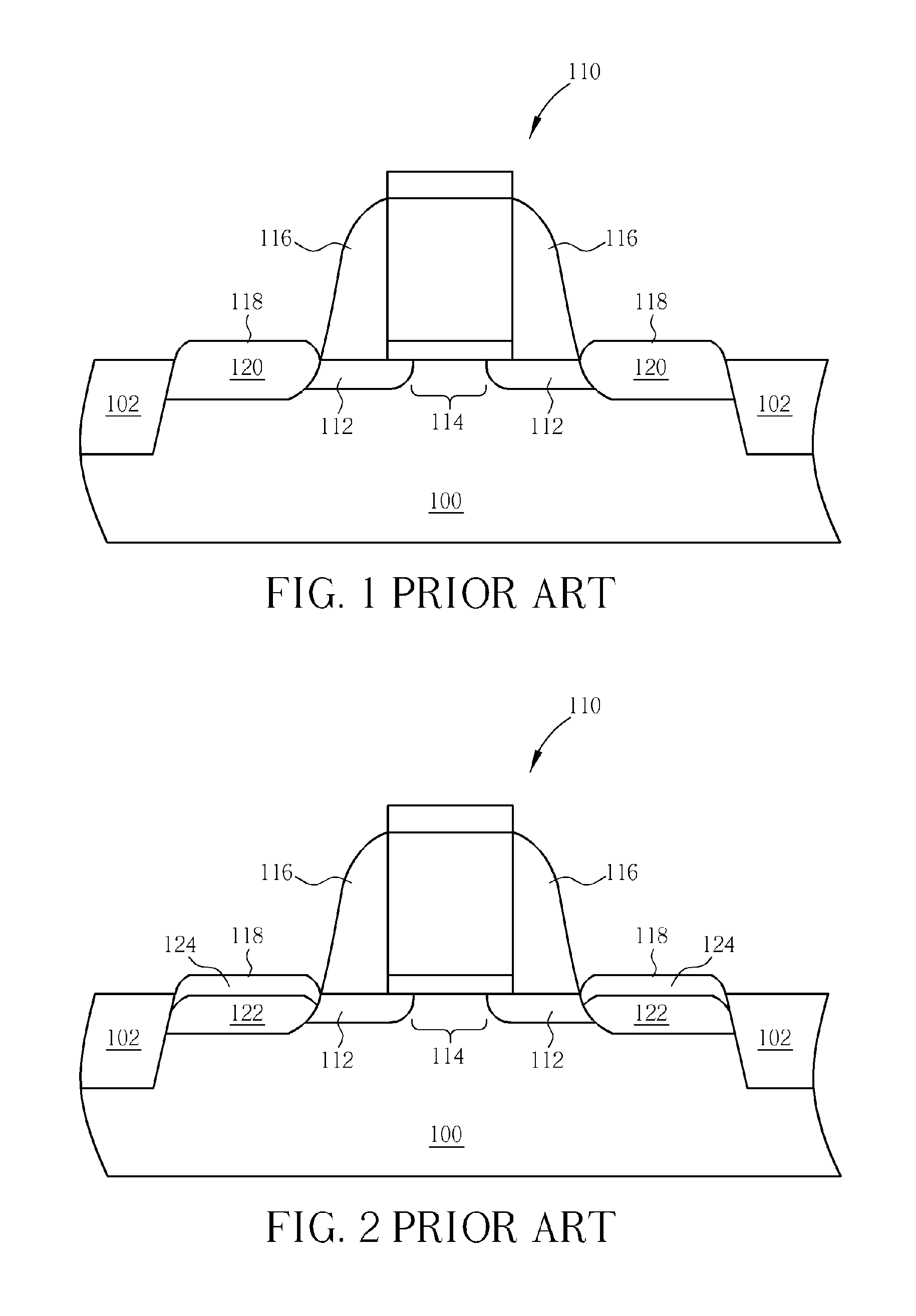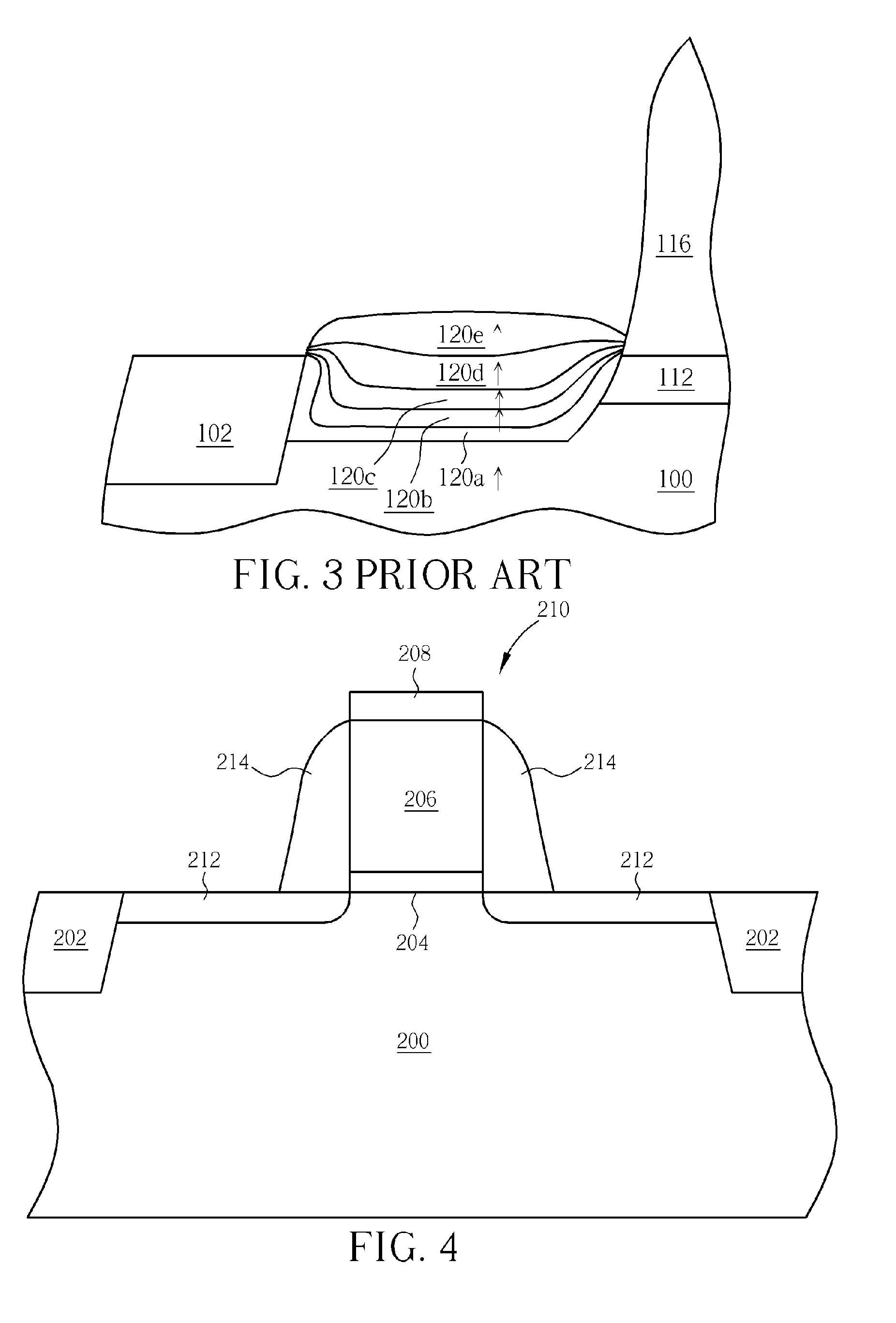Method for forming a semiconductor device
a semiconductor and device technology, applied in semiconductor devices, chemical vapor deposition coatings, coatings, etc., can solve the problems of enhancing the mobility and driving current of the metal-oxide-semiconductor (mos) transistor, and achieve the effect of reducing the difficulty of removing the spacer and the ion implantation performed afterwards
- Summary
- Abstract
- Description
- Claims
- Application Information
AI Technical Summary
Benefits of technology
Problems solved by technology
Method used
Image
Examples
Embodiment Construction
[0018]Please refer to FIGS. 4-8, which are schematic drawings illustrating a method for forming a semiconductor device according to a first preferred embodiment of the present invention. As shown in FIG. 4, a substrate 200, such as a silicon substrate, having a plurality of shallow trench isolation (STI) 202 serving for electrically isolating different semiconductor devices is provided. Then a patterned hard mask layer 208 used to define a gate dielectric layer 204 and a gate conductive layer 206 is formed, then a gate 210 is following formed.
[0019]Please refer to FIGS. 4-5. A first ion implantation is performed to form lightly doped drains (LDDs) 212 in the substrate 200 at two sides of the gate 210 and followed by forming a spacer 214 on sidewall of the gate 210. With the patterned hard mask layer 208 and the spacer 214 serving as masks during an etching process, recesses 216 are formed in the substrate 200 at two sides of the gate 210, as shown in FIG. 5.
[0020]Please refer to FIG...
PUM
| Property | Measurement | Unit |
|---|---|---|
| temperature | aaaaa | aaaaa |
| temperature | aaaaa | aaaaa |
| temperature | aaaaa | aaaaa |
Abstract
Description
Claims
Application Information
 Login to View More
Login to View More - R&D
- Intellectual Property
- Life Sciences
- Materials
- Tech Scout
- Unparalleled Data Quality
- Higher Quality Content
- 60% Fewer Hallucinations
Browse by: Latest US Patents, China's latest patents, Technical Efficacy Thesaurus, Application Domain, Technology Topic, Popular Technical Reports.
© 2025 PatSnap. All rights reserved.Legal|Privacy policy|Modern Slavery Act Transparency Statement|Sitemap|About US| Contact US: help@patsnap.com



